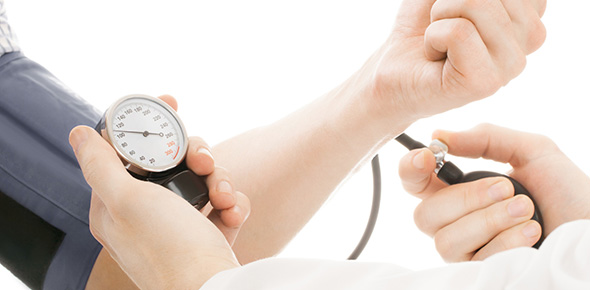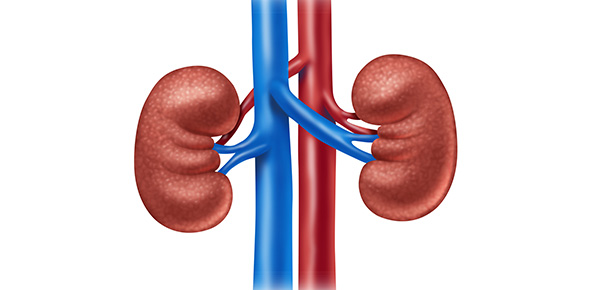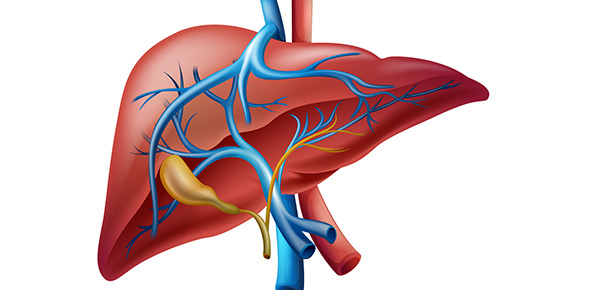Related Flashcards
Related Topics
Cards In This Set
| Front | Back |
|
Interpret the meaning of 20/20 vision
|
Normal visual acuity is 20/20. The top number indicates the distance the person is standing from the chart and the donominator gives the distance which a normal eye could have read that particular line. 20/20 means you can read at 20 feet what the normal eye can read at 20 feet.
|
|
Snellen eye chart
|
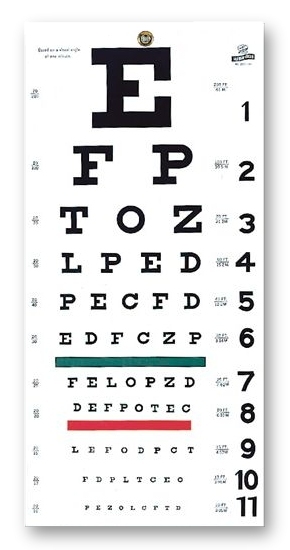 Most commonly used and accurate measure of visual acuity. It has lines of letters arranged in decreasing size. Normal vision is 20/20. |
|
Near Vision Test
|
Purpose: To screen people over 40 or people having difficulty reading near vision. Test near vision with a handheld vision screener with various sizes of print. Have the person hold the card about 14 inches away. Test each eye separately. Expected findings: A normal result is 14/14 in each eye, read without hesitancy, and without moving the card closer or farther away.
|
|
Corneal LIght Reflex
|
Purpose: to assess the parallel alignment of eyes by shining a light toward the person's eyes.To perform: Direct the person to stare ahead as you hold the light about 12 inches away. The reflection of the light on the corneas should be in the exact same spot on each eye (symmetrical).
|
|
Pupillary Light Reflex
|
This is the normal constriction of the pupils when bright light shines on the retina. Purpose: This tests the function of the cranial nerve, the optic nerve, and the oculomotor nerve because these nerves are required for the reflex to occur. To perform: Expose one eye to the bright light and observe for constriction of that pupil and the simultaneous constriction of the other pupil. Expected findings: When one eye is exposed to bright light, both pupils will constrict.
|
|
Cover Test
|
Purpose: To detect small degrees of deviated alignment by interrupting the fusion reflex that normally keeps the two eyes parallel. To perform: Ask the person to stare straight ahead at your nose even though the gaze may be interrupted. With an opaque card, cover one eye. As it is covered, note the uncovered eye. Expected findings: A normal response is a steady fixed gaze. Now, uncover the eye and observe it for movement. It should be staring straight ahead. If it jumps to re-establish fixation, eye muscle weakness exists. Repeat with other eye.
|
|
Accommodation Test
|
Purpose: To test for accommodation: the adaptation of the eye for near vision. To perform: Ask the person to focus on a distant object. This process dilates the pupils. Then have the person shift the gaze to a near object, such as your finger held about 8 cm from nose. Expected findings: A normal response includes 1. pupillary constriction 2. convergence of the axes of the eyes.
|
|
PERRLA
|
The method for recording the normal response to all these maneuvers: P=PupilsE=EqualR=RoundR=React to L=LightA=Accommodations
|
|
Collect subjective history information concerning eye and vision
|
1. Vision difficulty (decreased acuity, blurring, blind spots)2. Pain3. Strabismus, diplopia4. Redness, swelling5. Watering, discharge6. Hx of ocular problems7. Glaucoma8. Use of glasses/contacts9. Self-care behaviors
|
|
Inspect external eye structure
|
GeneralEyebrowsEyelids and lashesEyeball alignmentConjunctiva and scleraLacrimal apparatus
|
|
Inspect anterior eyeball structures
|
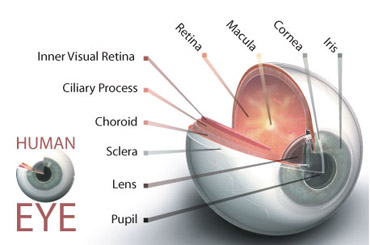 Cornea and lensIris and pupil (size, shape, equality, pupillary light reflex, accommodation) |
|
Inspect ocular fundus
|
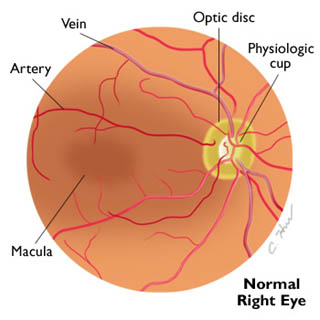 Optic disc (color, shape, margins, cup-disc ratio)Retinal vessels (number, color, artery-vein ratio, caliber, arteriovenous crossings, tortuosity, pulsations)General background (color, integrity)Macula |
|
External auditory canal
|
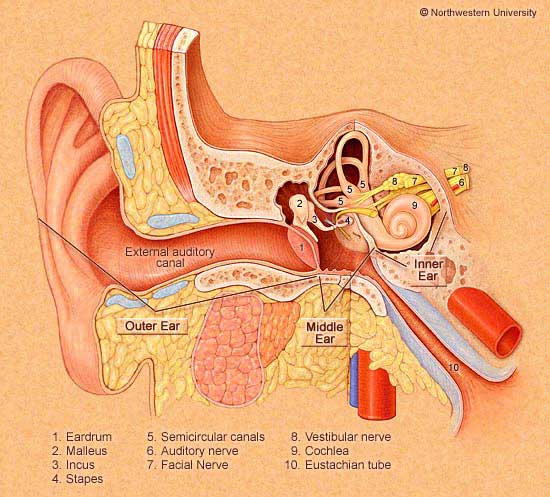 Opening through which sound waves are funneled into the ear. The canal is a cul-de-sac 2.5-3cm long and terminates at the eardrum. It is lined with glands that secrete cerumen (ear wax) |
|
Tympanic membrane
|
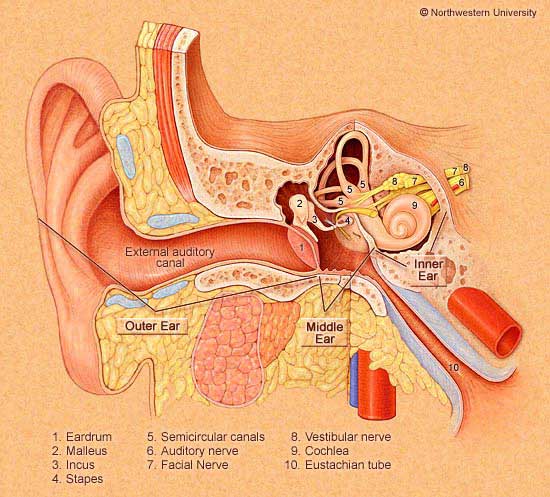 Aka eardrumSeparates the external and middle ear and is titled obliquely to the ear canal, facing downward and somewhat forward. The drum is oval and slightly concave |
|
Malleus
|
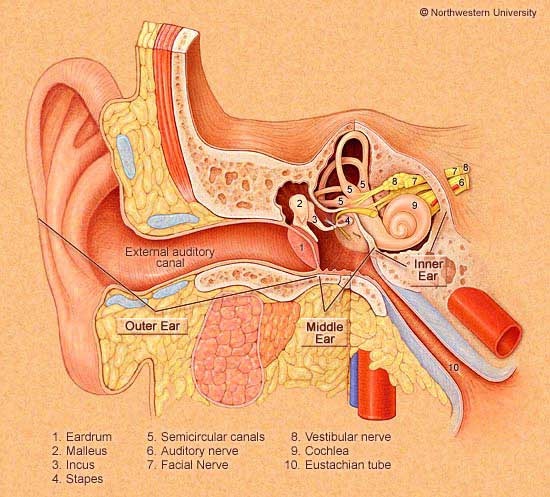 A middle ear ossicle that pulls the eardrum in at its center. It has 3 parts: the umbo, the manubrium (the handle), and the short process. |





